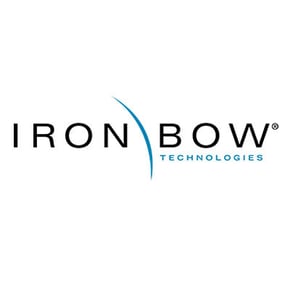Across the government, the Federal Cloud Computing Strategy—better known these days as Cloud Smart—is transforming the ways government agencies work, utilize data and serve constituents.
In an April 1 webcast featuring Iron Bow Technologies, Dell Technologies, Intel and government partners, experts weighed in on Cloud Smart’s impact on their digital transformation. As government organizations undergo modernization efforts, agency leaders say Cloud Smart continues to shape their journey, guiding decision-making and offering best practices.
Since its rollout last year, Cloud Smart has empowered agency IT leaders to shed burdensome legacy policies and tools, tailor their strategy to their distinct missions, and build a savvy workforce.
Brian Merrick, director of cloud programs at the Department of State, noted the government-wide shift to Cloud Smart has freed up decision-makers to be more thoughtful and strategic about investments in IT modernization efforts.
“It’s hard to make the case to spend money on something that isn’t broken, but with the Cloud Smart guidance in place, it’s allowed business to drive priorities,” he said. “It’s also improved information-sharing for greenfield projects, reducing the time-to-market for innovative solutions and accelerating outcomes,” Merrick added.
Melvin Greer, chief data scientist at Intel and fellow in residence/senior adviser in the FBI’s Information Technology Applications and Data Division, agreed that Cloud Smart is enabling a more mindful and pragmatic approach in determining which workflows to move to the cloud while maximizing and securing those workflows. He added the convergence of cloud migration and analytics is driving closer examination of how cloud services can improve agencies’ data management, analysis and derived insight.
Government agencies are making strides in transitioning to cloud capabilities, but it’s critical that cloud adoption happens when and where it makes the most sense. While this means agencies vary in their cloud adoption and IT modernization maturity, it also illustrates how and why a deliberate approach—one that starts with evaluating strategy and the status quo—can deliver the most value. This is especially true for agencies looking at moving forward from legacy applications and infrastructure.
Greer highlighted the Army as an example of maximizing data through a strategic approach, including through the creation of the Army Data Strategy. As a result, the Army was able to take advantage of advances in data analytics and build a classification mechanism that provides easier identification and utilization of data across the service, he noted.
It’s critical for agencies, regardless of where they are in their respective modernization journeys, to make sure leaders are clear on the business outcomes they want to achieve and the funding they have available to do so.
“Cloud isn’t necessarily cheaper, it’s just spending in a different way, so you have to make sure you have the budget to achieve your desired outcomes,” said Merrick. He emphasized that agencies should work closely with cloud providers to use modeling tools to understand costs and structure and monitoring tools to watch spending and usage.
A strong partnership between providers and agency customers is important in defining goals and regularly evaluating progress in objectives—and to maintaining accountability. Providers that are tightly integrated with customer outcomes, checking in regular and frequent intervals, are better positioned to help deliver on ROI and goals and meet federal mandates.
Iron Bow can help make digital modernization goals into reality, including through its multi-cloud IronTarget reference architecture, diverse managed services and data center solutions. For more information, visit ironbow.com.
How to Successfully Implement a Cloud Strategy


COMMENTS